Classic muscle cars are more than just high-performance vehicles they represent a unique era of automotive design and engineering.
Unlike many modern cars, which focus heavily on electronics and functionality, muscle cars from the past had distinct features that added character and made them feel more personal to their owners.
These cars were often built with a hands-on approach, emphasizing mechanical engineering over digital technology. This craftsmanship gave each muscle car its own personality, making it a reflection of the owner’s tastes and style.
Today, muscle cars are becoming increasingly advanced, with features that prioritize efficiency and practicality. While these advancements are impressive and necessary for modern driving, they often lack the charm and flair that define classic muscle cars.
In the quest for performance and reliability, some of the unique traits that made muscle cars special have been left behind.
This shift leaves many enthusiasts longing for the return of those distinctive features that added character and warmth to their vehicles.
There are many outdated muscle car features that fans of the genre would love to see make a comeback. These features not only enhanced the driving experience but also allowed owners to express themselves through their cars.
From vibrant colors and unique designs to practical elements that showcased the raw power of the vehicle, these traits contributed to a sense of pride in ownership.
For instance, one of the standout features of classic muscle cars was their bold color options. Manufacturers offered a dazzling array of hues, often with unique names that captured the spirit of the times.
Colors like Plum Crazy, Hemi Orange, and Grabber Blue allowed owners to showcase their personalities on the road. Today’s muscle cars often stick to a more subdued palette, which, while elegant, lacks the daring vibrancy of their predecessors.
A return to these striking color choices could rekindle the excitement and individuality that once defined the muscle car experience.
Another feature worth reviving is the vinyl roof. Many classic muscle cars sported these stylish additions, which not only provided a sense of luxury but also allowed for creative customization. Whether it was a simple black vinyl or a more adventurous pattern, the vinyl roof gave cars a unique look that stood out on the road.
Modern muscle cars have largely moved away from this aesthetic, focusing instead on sleek lines and minimalist designs. Reintroducing the vinyl roof could add a touch of nostalgia and charm to contemporary models.
Classic muscle cars also featured distinct interior designs that were tailored to the driving experience. From sporty bucket seats to unique dashboard layouts, the interiors were designed to enhance the feeling of being behind the wheel of a powerful machine.
Many modern vehicles prioritize comfort and technology, but they often sacrifice the driver-focused experience that muscle car enthusiasts crave. Bringing back retro-inspired interiors could help create a more engaging and enjoyable driving experience.
Finally, the sound of a muscle car is an iconic element that cannot be overlooked. Classic muscle cars roared with a distinctive growl that signified raw power and performance.
Today’s vehicles often have sound-enhancing technology that, while effective, can feel artificial. Reviving the authentic exhaust notes of yesteryear could reignite the passion for muscle cars, allowing drivers to feel that exhilarating connection to the road once again.
While modern muscle cars boast impressive technology and performance, there is a longing for the features that made classic models truly special. By revisiting and incorporating these outdated elements, manufacturers could create a new generation of muscle cars that honors the past while still delivering modern performance.
The combination of vibrant colors, unique designs, driver-focused interiors, and authentic sounds could reinvigorate the muscle car scene and attract a new generation of enthusiasts. As we look to the future, it’s clear that there’s still room for nostalgia and personal expression in the era of muscle cars.
10) The Nostalgia of CB Radios in Muscle Cars
One of the most memorable features found in classic muscle cars, like the Pontiac Trans Am, was the CB radio. For those who remember, CB (Citizens Band) radios were a popular way for drivers to communicate with each other on the road.
These radios added a unique element to the driving experience, allowing drivers to chat, share information, and even have some fun while cruising.
Although the idea of having a radio that can connect you with nearby vehicles might sound outdated today, there are several reasons why the nostalgia of CB radios deserves a revival.
First and foremost, CB radios added a sense of community and connection among drivers. In the heyday of muscle cars, you could be cruising down the highway and hear someone call out, “Hey, what kind of car do you have?” or “Watch out for the police up ahead!”
This friendly banter created a bond among drivers, turning the road into a more social place. You could engage in lighthearted conversations or even swap car-related tips while on the move.
For enthusiasts, this was a great way to connect with fellow gearheads and share the excitement of driving muscle cars.
One of the most fun aspects of having a CB radio was the ability to playfully engage with other drivers. Imagine donning a cowboy hat and channeling your inner Burt Reynolds, just like in the classic movie “Smokey and the Bandit.”
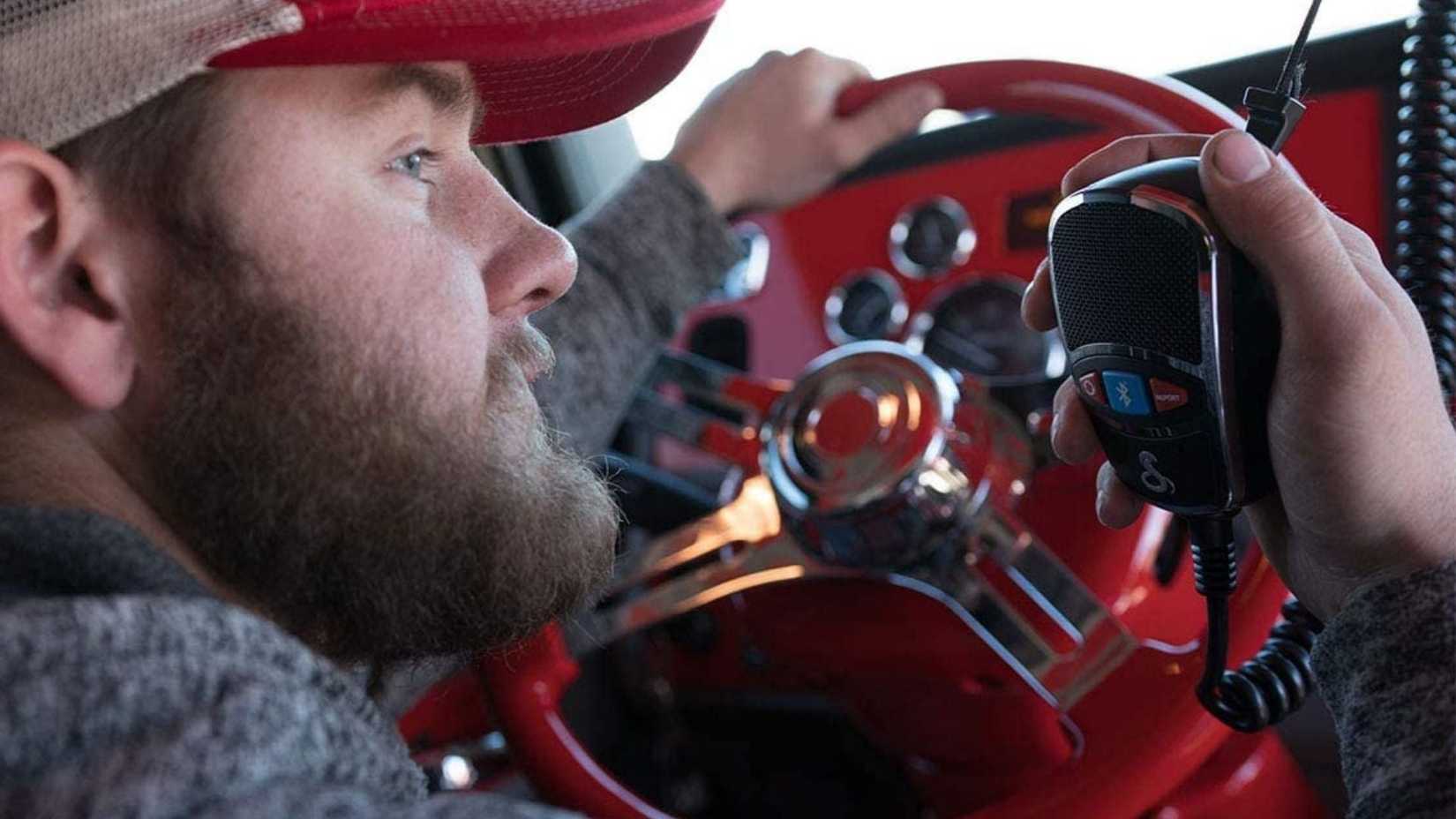
While the car in the film used an aftermarket system, having a factory-installed CB radio would have made it even cooler. The thrill of calling out to fellow drivers, especially when racing on the open road, added an exhilarating edge to the driving experience.
The chance to banter with nearby cars made every trip feel like an adventure, and that excitement is something many modern drivers miss.
Beyond the fun, CB radios also provided practical benefits. In case of an emergency, having a means of communication could be lifesaving. If a driver experienced car trouble or an accident, they could quickly reach out for help.
Unlike modern cars, which primarily rely on smartphones for communication, CB radios allowed drivers to connect directly with those around them.
This could be especially useful in rural areas or on lonely highways where cell service might be spotty. A friendly passerby could hear a call for help and come to the rescue, fostering a sense of camaraderie among motorists.
However, with the rise of hands-free technology and mobile communication, the chances of seeing CB radios return as standard options in cars are slim. Today’s vehicles focus on advanced features that prioritize safety and connectivity.
While these advancements are essential, they often lack the personal touch and character that made CB radios special. It would be a refreshing change if manufacturers considered adding CB radios as optional features in new muscle cars.
This addition could evoke nostalgia while still providing practical benefits for drivers.
In a era where technology is continually evolving, there is something to be said for the charm of older features like CB radios.
They represent a simpler time when drivers were more connected to one another on the road. Bringing back CB radios could help rekindle the spirit of community among drivers, allowing for a fun and engaging experience.
Whether it’s chatting about car modifications, sharing tips, or simply enjoying the thrill of the ride, CB radios would add a unique touch to modern muscle cars.
In, while modern muscle cars are equipped with the latest technology, incorporating CB radios could bring back the joy of driving that many enthusiasts miss.
The combination of fun interactions, community connection, and practical use makes CB radios a feature worth revisiting. As car manufacturers look to the future, they should consider reviving this classic element, allowing a new generation of drivers to experience the thrill of communicating on the open road.
After all, the joy of driving is not just about the car itself; it’s also about the connections we make along the way.
9) The Charm of Vinyl Roofs in Muscle Cars
In the era of classic muscle cars, few features evoke as much nostalgia as the vinyl roof. While they may not have served a specific purpose, these roofs added a distinct personality to many vehicles from the mid-20th century.
Typically found in black or white, vinyl roofs could also come in various colors, allowing car buyers to personalize their rides. This unique touch made muscle cars stand out on the road and showcased the individuality of their owners.
Vinyl roofs became particularly popular in the 1960s and 1970s, a time when muscle cars were not just about speed and power but also about style and flair. Adding a vinyl roof could transform a standard car into something eye-catching and distinctive.
Car manufacturers recognized the appeal and began offering vinyl roofs as a factory option. For many owners, this feature was a way to express their tastes and preferences, creating a bespoke look that set their vehicles apart from others.
However, the popularity of vinyl roofs began to decline in the 1980s. As automotive design trends evolved, manufacturers aimed for sleeker, more aerodynamic shapes.
The vinyl roofs, which did not sit flush with the car’s roofline, made vehicles appear taller and less streamlined. Designers wanted their cars to reflect a modern aesthetic, and the absence of a vinyl roof allowed for smoother lines and a more integrated look.
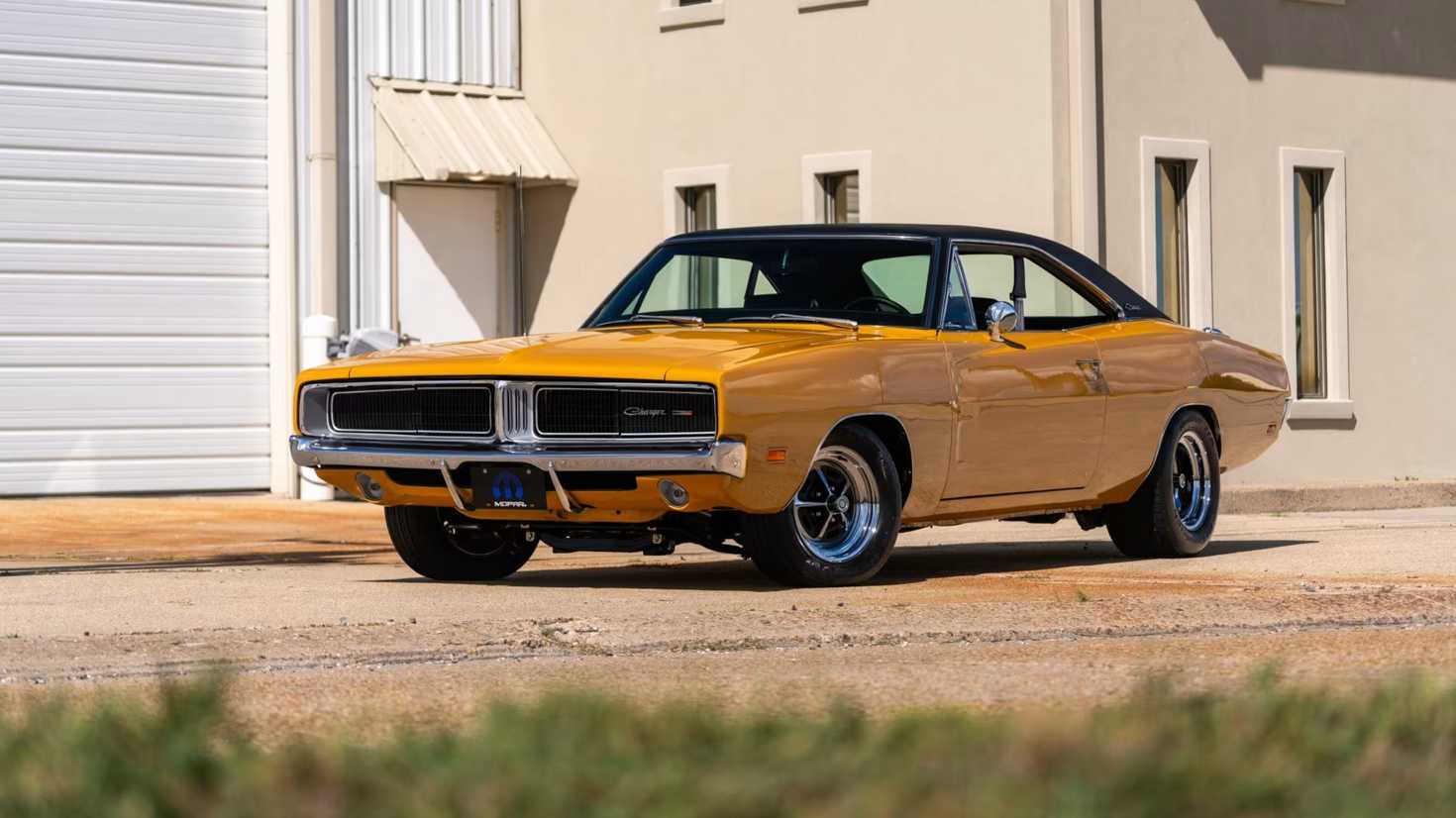
While this shift in design was understandable, it also marked the loss of an iconic characteristic that many enthusiasts had come to love.
The decline of vinyl roofs coincided with the rise of new materials and technologies in the automotive industry. As cars became more sophisticated, manufacturers began focusing on advanced paint finishes and sleek designs.
Vinyl roofs were slowly phased out in favor of smoother, more modern roofs that complemented the look of the vehicle. This transition resulted in a cleaner appearance, but it also meant that a piece of automotive history was fading away.
Today, vinyl is often associated with wrapping the entire body of a car rather than being used as a roofing option. Car wraps allow owners to customize their vehicles with various colors and designs, making a bold statement on the road. However, this modern interpretation lacks the nostalgia and charm that classic vinyl roofs brought to muscle cars.
There is something special about the way vinyl roofs transformed the appearance of a car, giving it a vintage flair that many enthusiasts still appreciate.
The revival of interest in classic cars has sparked a renewed appreciation for features like vinyl roofs. As more people seek to restore and preserve muscle cars, some are considering reintroducing vinyl roofs as a way to pay homage to the past.
This trend allows owners to embrace the unique character that vinyl roofs provided while celebrating the legacy of the muscle car era. For those who love classic cars, the sight of a beautifully maintained muscle car with a vinyl roof is a nostalgic reminder of a time when style and individuality were key components of automotive design.
In, vinyl roofs represent a fascinating chapter in the history of muscle cars. While they may not have served a functional purpose, they added a touch of personality and flair that many drivers cherished.
As automotive design continues to evolve, it is important to remember the elements that made classic cars so special. The vinyl roof is one such feature, reminding us of a time when cars were not only machines but also expressions of identity and style.
Reintroducing vinyl roofs could offer a beautiful blend of nostalgia and modernity, celebrating the timeless appeal of muscle cars for generations to come.
8) The Nostalgia of Vent Windows in Muscle Cars
Vent windows were once a defining feature of muscle cars in the 1960s and 1970s, playing a significant role in both design and functionality. These small, often angular windows were located in the front door panels and were designed to allow fresh air into the cabin.
They added a stylish touch to the look of the car, helping to create the sharp lines that many muscle cars are known for. However, their practical use extended beyond aesthetics; vent windows provided a convenient way for drivers and passengers to enjoy a refreshing breeze while cruising down the road.
One of the main advantages of vent windows was their ability to direct airflow directly into the vehicle. Unlike traditional windows that had to be fully rolled down, vent windows could be adjusted to allow just the right amount of air in.
This feature was especially appreciated on hot days, as it offered an easy way to cool down without relying solely on the car’s air conditioning system. Drivers could easily position the glass to create a comfortable stream of air, making for a more enjoyable driving experience.
Despite their benefits, vent windows began to disappear from cars by the time the 1980s rolled around. The primary reason for their decline was the increasing popularity of air conditioning.
In earlier decades, air conditioning was often seen as a luxury feature and could be an expensive option for many vehicles.
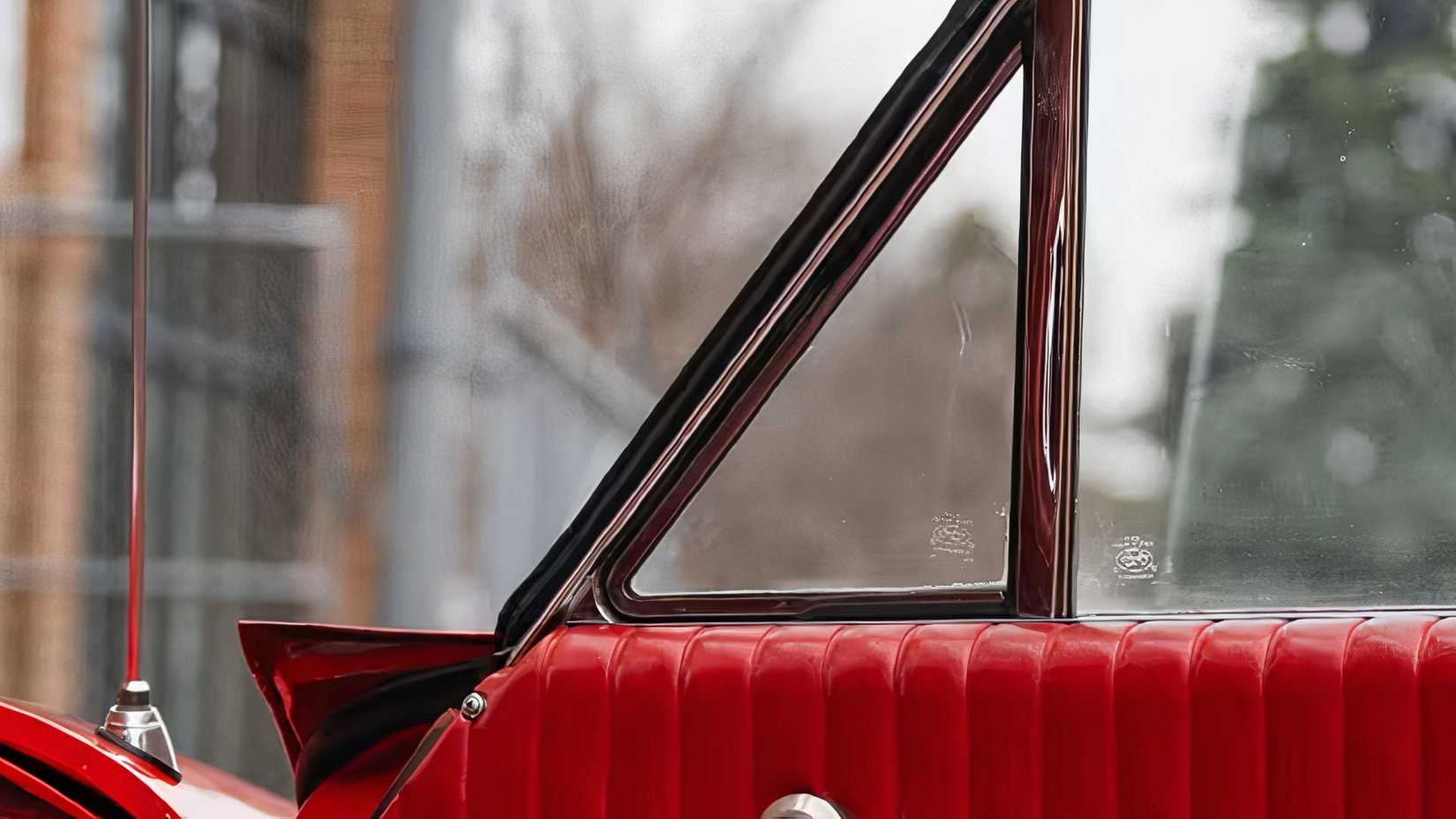
However, as technology improved and air conditioning became more affordable, it became standard in most cars. With the availability of cool air at the touch of a button, the need for vent windows diminished significantly.
Additionally, vent windows posed a challenge for aerodynamics. As manufacturers started focusing on improving fuel efficiency, they realized that every element of a car’s design played a role in its performance.
Vent windows, while stylish, created drag when the car was in motion, negatively affecting fuel economy. As a result, automakers began to phase them out in favor of more streamlined designs that could cut through the air more efficiently.
However, not everyone wants to rely on air conditioning all the time. Many drivers still appreciate the simplicity and charm of vent windows.
The ability to let in fresh air without having to roll down the entire window can be quite appealing, especially during mild weather. Imagine driving a classic muscle car down a scenic road, the sun shining and the breeze flowing through the vent windows. It offers a feeling of connection to the outdoors that modern vehicles often lack.
Bringing back vent windows could offer a blend of nostalgia and modern practicality. Some car enthusiasts are calling for the reintroduction of these windows in contemporary designs, arguing that they could add character to new models while providing a useful feature.
Car manufacturers could consider offering vent windows as an option, giving buyers the choice between the traditional design and the convenience of full windows.
This would not only pay homage to classic muscle cars but also cater to those who appreciate the unique driving experience they offer.
In, vent windows were more than just a design element in muscle cars; they represented a practical feature that added enjoyment to driving. While the rise of air conditioning and a focus on fuel efficiency led to their decline, the nostalgia associated with these windows remains strong among car enthusiasts.
Reviving vent windows could provide a unique blend of style and functionality for modern vehicles, allowing drivers to enjoy the open air while celebrating the classic designs of the past.
Ultimately, the return of vent windows would not only honor the legacy of muscle cars but also enhance the driving experience for those who appreciate the finer details of automotive history.
7) The Charm of T-Tops in Classic Muscle Cars
T-tops were once a popular feature in muscle cars, blending the benefits of a hard top and a convertible in a stylish design. This unique roof configuration allowed drivers and passengers to enjoy an open-air experience while still providing the security and structure of a hard roof.
With their removable panels, T-tops offered a fun way to enjoy the sun and fresh air on a nice day.
One of the main advantages of T-tops was their versatility. Unlike traditional convertibles, which require the entire roof to be down, T-tops consist of two separate panels that can be easily removed.
This design allowed for a customizable driving experience. Drivers could choose to have both panels off for maximum airflow or keep one in place for a bit of shade.
This flexibility was perfect for those who enjoyed the feeling of the wind in their hair but also wanted the option of a more enclosed cabin when the weather changed or if it became too sunny.
Additionally, the removable panels could be stored conveniently behind the seats when not in use. This feature made it easy for drivers to transition between an open and closed vehicle.
There was no need for complicated processes or storage issues; simply take the panels out, stow them away, and enjoy the drive. This convenience added to the appeal of T-tops, making them a favorite among muscle car enthusiasts.
T-tops also contributed to the aesthetic appeal of muscle cars. They created a sporty look that appealed to drivers who wanted their vehicles to stand out.
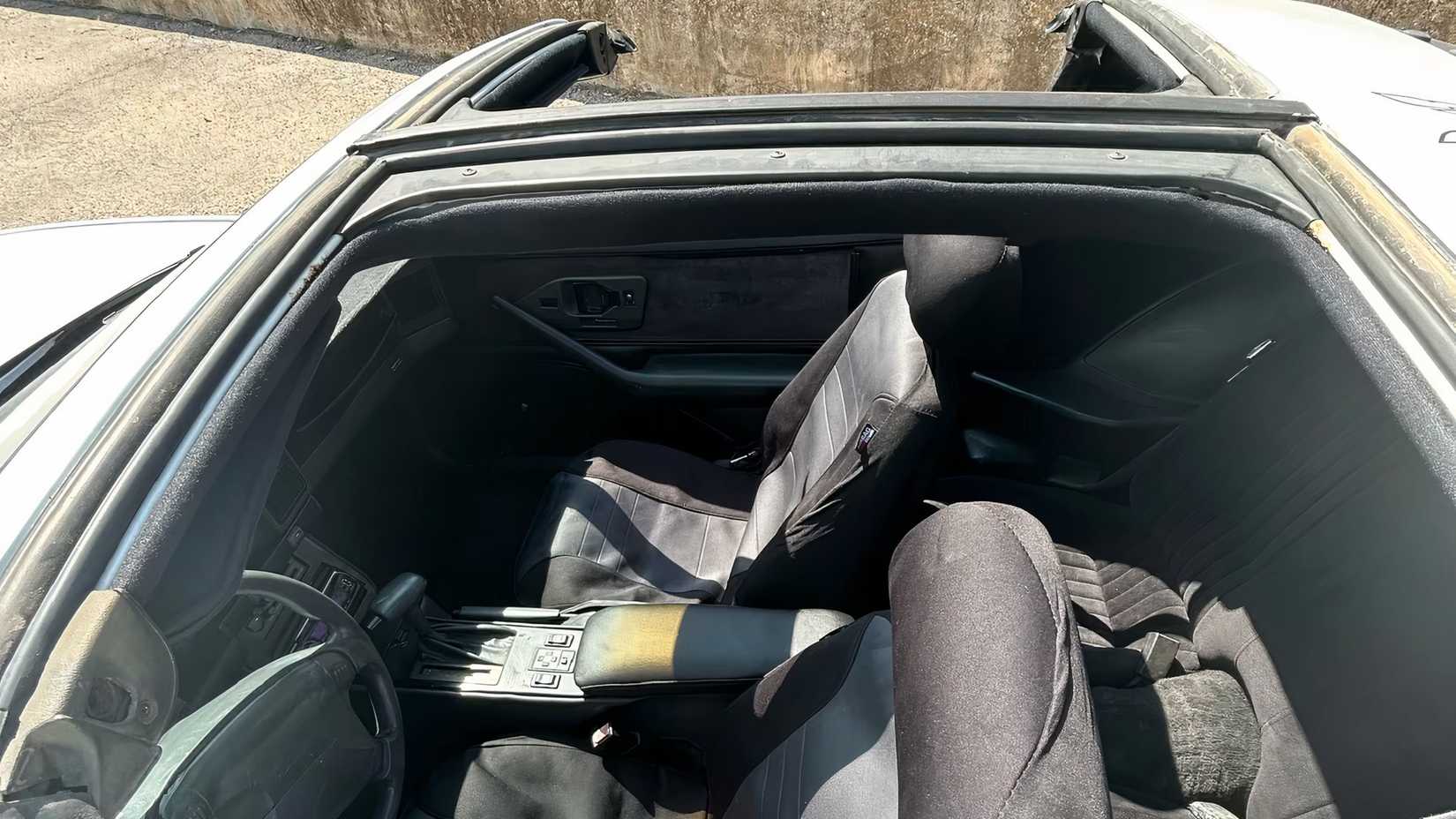
The design allowed for a panoramic view of the sky, giving the interior a more spacious and inviting feel. This sense of openness was especially desirable in muscle cars, which often emphasized performance and excitement.
Drivers could enjoy the thrill of high speeds with the sky above them, enhancing the driving experience.
Despite their popularity, T-tops began to fade from the automotive by the early 2000s. The Pontiac Firebird, one of the most iconic muscle cars to feature T-tops, was discontinued in 2002.
As a result, the option to have T-tops slowly disappeared from the market. With the decline of muscle cars and the shift towards different automotive trends, the distinctive T-top roof became less common.
However, some modern sports cars still utilize T-tops, demonstrating that there is still demand for this unique feature. For instance, models like the Porsche 911 have continued to offer Targa tops, which serve a similar function to T-tops.
This shows that there is still an appreciation for the combination of a secure roof and the option for open-air driving.
Reviving T-tops in modern muscle cars could tap into the nostalgia of classic designs while providing a fresh option for new buyers.
Many car enthusiasts still cherish the thrill of driving with the roof panels removed, and bringing back T-tops would allow a new generation to experience that joy.
Manufacturers could design new models with T-top options, combining modern technology with retro styling, appealing to both older fans of classic cars and younger drivers seeking a unique driving experience.
In, T-tops were a beloved feature in classic muscle cars, offering a perfect blend of style, convenience, and open-air driving.
Their ability to provide the best of both worlds made them a favorite among car enthusiasts, and their absence is still felt today. By considering a return to T-top designs, automakers could honor the legacy of classic muscle cars while giving new drivers a taste of the freedom and excitement that T-tops once represented.
The revival of T-tops could reignite interest in muscle cars, bringing a timeless feature back to the modern automotive scene.
6) The Nostalgic Allure of Pop-Up Headlights in Classic Cars
Pop-up headlights are a fascinating feature that many car enthusiasts remember fondly. First introduced in the 1960s, these unique headlights brought a sense of style and innovation to various vehicles, including some muscle cars like the Oldsmobile Toronado and the Chevy Corvette C2.
The way these headlights would smoothly rise from their hidden positions when activated created a dramatic visual effect that many. Not only did they look cool, but they also provided practical benefits for car designers.
One of the main advantages of pop-up headlights was their ability to enhance the design of the vehicle. Traditional headlights often require a flat and angular front end, which can limit a designer’s creativity.
In, pop-up headlights allowed for a more curvy and streamlined look. With these headlights tucked away when not in use, car manufacturers could create sleeker front-end designs, contributing to a more aerodynamic and attractive appearance. This design freedom helped many classic cars stand out on the road, making them instantly recognizable.
While pop-up headlights added flair and style, they also presented some challenges. Over time, these mechanisms could become unreliable, especially as the vehicles aged.
The motors and mechanisms that controlled the headlights might wear out, leading to one or both headlights failing to pop up when needed. This could be frustrating and even dangerous, as it would leave drivers unable to see or be seen in the dark.
As a result, many owners of classic cars with pop-up headlights found themselves needing to repair or replace the systems to keep their cars roadworthy.
Safety concerns also played a significant role in the decline of pop-up headlights. In the 1990s, regulations began to change, primarily aimed at enhancing pedestrian safety.
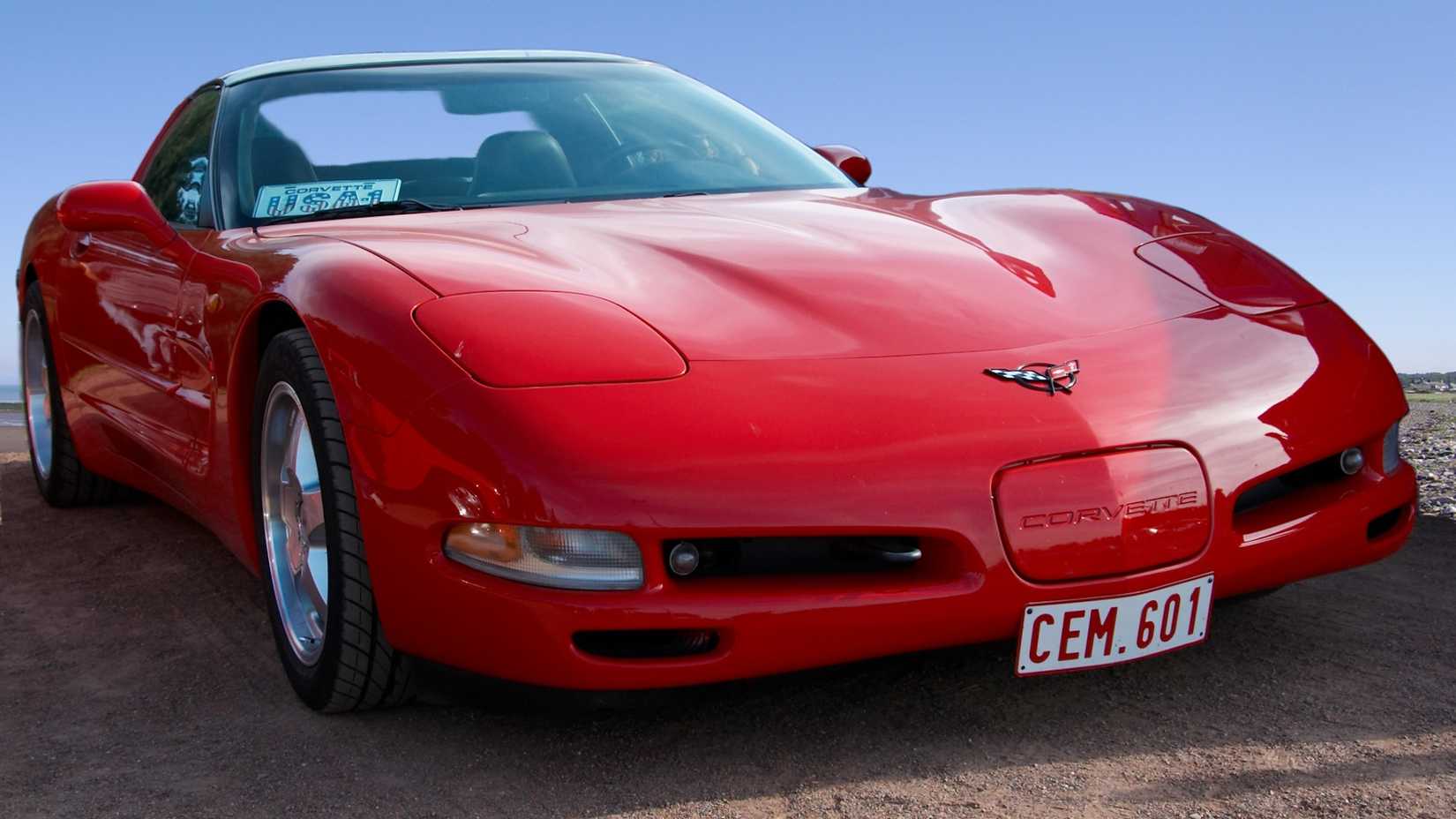
Studies showed that pop-up headlights could pose a risk to pedestrians if they were struck by a vehicle. The design, while visually appealing, created a more dangerous impact area, leading to their eventual prohibition in many countries.
Manufacturers had to adapt to these new regulations, moving away from the pop-up design in favor of more pedestrian-friendly alternatives.
Despite their fall from grace, pop-up headlights still hold a special place in the hearts of car enthusiasts and collectors. The nostalgia associated with classic cars featuring pop-up headlights remains strong, and many people long for the return of this unique feature.
There’s something inherently charming about the idea of headlights that emerge from hiding, reminiscent of the ingenuity and creativity that characterized automotive design in the past.
While it may seem unlikely that pop-up headlights will return to modern vehicles due to safety regulations, there is still hope that manufacturers can find a way to innovate and reintroduce them.
Advances in technology might allow for safer designs that still capture the essence of pop-up headlights.
For instance, modern materials and mechanisms could create a more reliable system that meets safety standards while still offering the unique aesthetic that fans adore.
In, pop-up headlights represent a fascinating chapter in automotive history, combining style and functionality in a way that drivers for decades.
Their ability to enhance the design of muscle cars and other vehicles made them a sought-after feature among enthusiasts. Although safety concerns and reliability issues led to their decline, the allure of pop-up headlights continues to spark the imagination of car lovers. As the automotive industry evolves, it would be exciting to see a revival of this iconic feature, possibly reimagined in a way that meets today’s safety standards.
The nostalgic charm of pop-up headlights deserves to live on, celebrating the creativity and innovation that have shaped the world of automobiles.
5) The Charm of Manual Handbrakes in Classic Muscle Cars
In the last decade, the automotive industry has seen a significant shift toward electronic features. While this change has brought numerous benefits, such as improved safety and convenience, it has also led to the loss of some classic elements that enthusiasts cherish.
One such feature is the manual handbrake. Traditionally found in older muscle cars, the manual handbrake adds a unique touch to the driving experience that many drivers miss today.
The manual handbrake, often referred to as the emergency brake, has been a staple in cars for decades. It typically consists of a lever located between the front seats, which the driver can pull to engage the rear brakes.
This simple yet effective design allows drivers to secure their vehicles when parked or, in some cases, to perform thrilling maneuvers like handbrake turns.
Muscle car fans know the joy of feeling the car slide slightly during a controlled drift, something that’s much harder to do with an electronic handbrake.
With the rise of technology, many modern vehicles have replaced traditional handbrakes with electronic versions. These electronic handbrakes operate with the push of a button, eliminating the need for a physical lever.
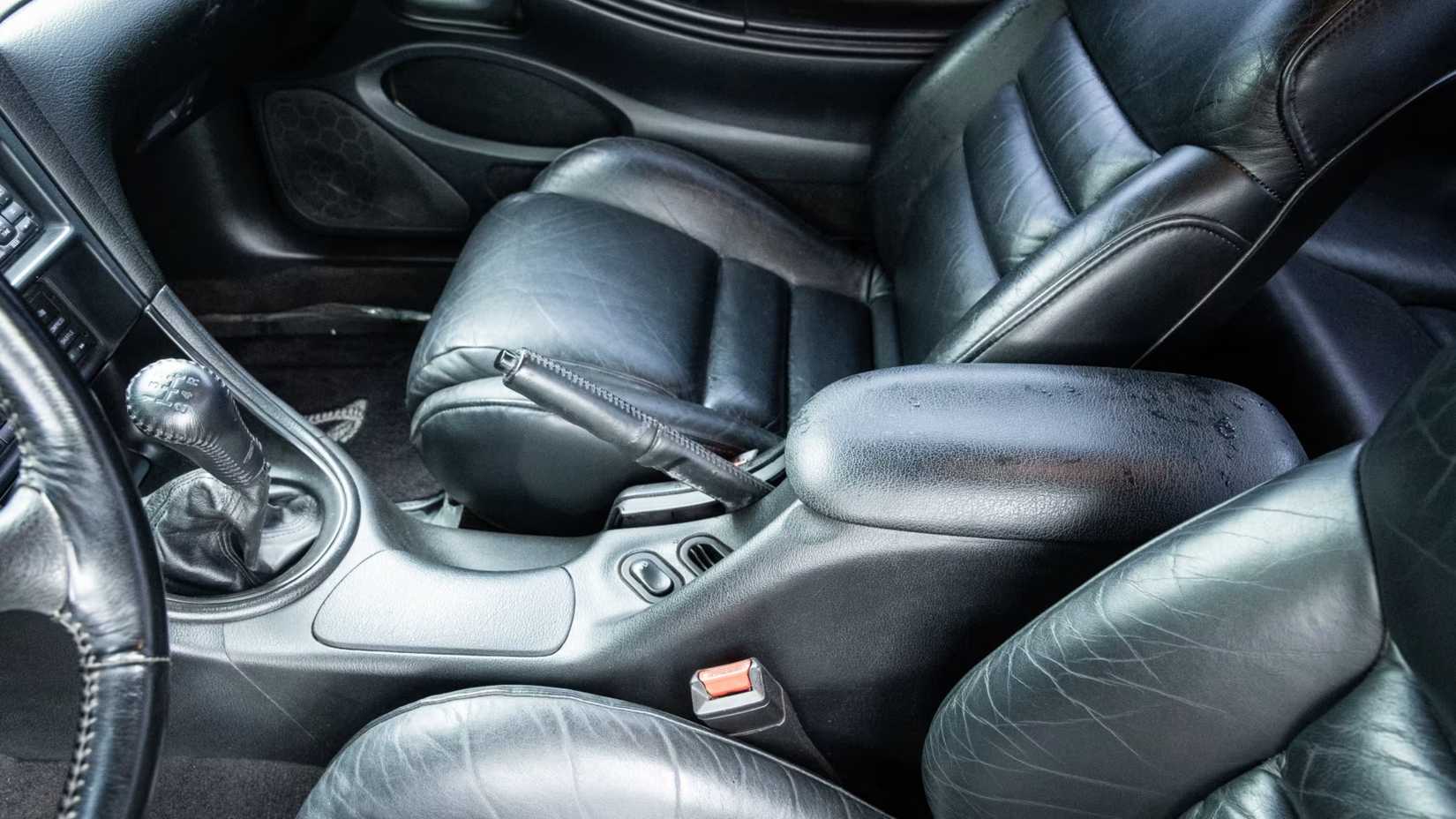
While this change may make it easier for some drivers, it also removes the tactile connection between the driver and the vehicle.
Pulling a lever gives a sense of control and engagement that simply pressing a button cannot replicate. For many enthusiasts, this loss of interaction is disheartening.
Moreover, the elimination of manual handbrakes has affected the way drivers experience their cars. The thrill of driving a muscle car is often about feeling the road and having the ability to perform maneuvers that require skill and precision.
The ability to engage a manual handbrake adds an element of excitement and allows for a more dynamic driving style. It encourages drivers to be more involved with their cars, honing their skills and deepening their connection to the vehicle.
Additionally, the manual handbrake provides a practical function that electronic versions sometimes lack. In the event of an electrical failure, a traditional handbrake will still function, allowing the driver to secure the car.
This reliability is essential, especially in older muscle cars that were built with straightforward mechanics.
Electronic systems, while generally reliable, can fail, leaving drivers without a means to secure their vehicles. A manual handbrake offers peace of mind that many drivers appreciate.
Despite the trend toward electronic features, there is still a strong demand for manual handbrakes, particularly among muscle car enthusiasts. Many drivers wish that manufacturers would consider offering the option of a manual handbrake in new models.
This inclusion would honor the legacy of classic muscle cars and cater to those who value the hands-on driving experience. It could be marketed as a feature for driving enthusiasts, helping to bridge the gap between modern technology and classic automotive charm.
The manual handbrake represents a significant part of the muscle car experience. Its tactile nature, ability to facilitate thrilling maneuvers, and practical reliability make it an essential feature that many drivers miss in today’s cars.
While the electronic revolution has brought many advancements to the automotive world, it has also stripped away some of the character and engagement that manual features provide.
As the industry continues to evolve, it would be exciting to see a revival of the manual handbrake, allowing drivers to fully enjoy the visceral connection that comes with driving a muscle car. Embracing this classic feature would celebrate the heritage of these vehicles and honor the passion of those who love to drive.
4) The Case for Thinner A-Pillars in Modern Muscle Cars
In recent years, car design has focused heavily on safety, which has led to several changes in how vehicles are built. One notable change is the thickness of the A-pillars, the vertical supports that frame the windshield.
While these pillars have become stronger and more robust to enhance safety during accidents, they have also created some drawbacks that many drivers and enthusiasts find frustrating.
The need for a balance between safety and visibility is crucial, especially in muscle cars that prioritize performance and driver engagement.
The main purpose of the A-pillars is to support the vehicle’s roof and maintain structural integrity during a crash. Thicker A-pillars are designed to withstand more force, preventing the roof from collapsing in an accident.
This improvement has undoubtedly made modern cars safer for occupants, which is a top priority for manufacturers and consumers alike. However, this focus on safety has come at a cost—visibility.
One significant issue with thicker A-pillars is that they create larger blind spots for drivers. When the pillars are wider, it becomes more challenging to see other vehicles, pedestrians, or obstacles, especially when making turns or changing lanes.
This reduced visibility can lead to dangerous situations on the road, as drivers may not be aware of their surroundings. Muscle cars, known for their spirited driving and performance, suffer particularly from this design flaw.
Enthusiasts want to feel connected to the road and have a clear view of their surroundings, something that thicker A-pillars can obstruct.
In addition to creating blind spots, thicker A-pillars can also make the interior of the car feel more cramped and less inviting. One of the joys of driving a muscle car is experiencing the sense of freedom and exhilaration that comes with it.
A bright and open cockpit enhances that feeling. When A-pillars are thin, more light can enter the car, making the interior feel airy and spacious.
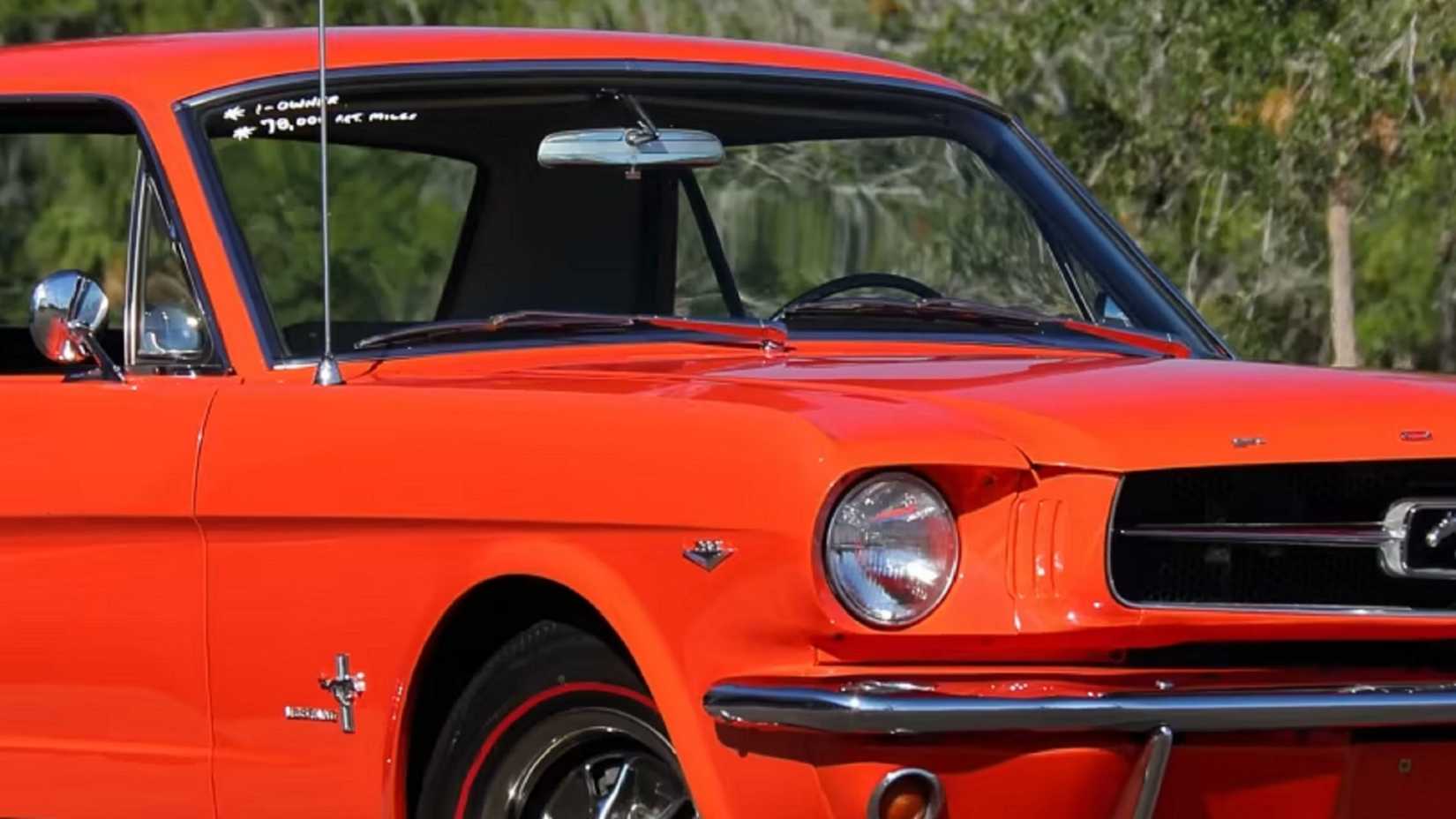
This is particularly important for drivers who enjoy long drives or spirited runs on winding roads. A well-lit interior can improve mood and comfort, which adds to the driving experience.
Another concern with thick A-pillars is the aesthetic impact they have on the car’s design. Many classic muscle cars featured sleeker, thinner pillars that contributed to their iconic silhouettes.
The design of these vehicles was often as much about style as it was about performance. By reintroducing thinner A-pillars, manufacturers could honor the design language of classic muscle cars while still maintaining modern safety standards.
The challenge lies in developing materials and engineering techniques that allow for both strength and reduced thickness.
If manufacturers could create a new generation of thinner A-pillars that maintain their rigidity, it would be a game-changer for muscle cars.
Advances in materials science, such as high-strength steel or composite materials, could potentially allow for this innovation.
By prioritizing both safety and visibility, manufacturers could cater to the desires of modern drivers while keeping them protected on the road.
In, the evolution of A-pillars in vehicle design represents the ongoing balancing act between safety and aesthetics. While thicker A-pillars have undoubtedly made cars safer, they have also compromised visibility and the driving experience.
Thinner A-pillars could enhance safety by improving visibility and making the interior feel more open. If car manufacturers can find a way to incorporate thinner pillars without sacrificing safety, it would mark a significant advancement in automotive design.
Ultimately, reimagining the A-pillar design could help muscle cars regain some of their classic charm while ensuring they meet today’s safety standards.
3) The Return of Tall Tire Walls in Muscle Cars A Nostalgic Touch
During the golden era of muscle cars in the 1960s and 1970s, one of the standout features was the use of tall tire walls, especially on the rear tires. This design choice did more than just look good; it provided a variety of benefits that contributed to the performance and style of these iconic vehicles.
As the significance of tall tire walls, it’s clear that bringing them back could add a unique touch to modern muscle cars.
Tall tire walls, or sidewalls, are the portions of the tire that sit between the rim and the tread. In the classic muscle cars of the past, these taller sidewalls helped create a distinctive look that gave the cars an aggressive stance.
This design not only enhanced the aesthetic appeal but also contributed to what is often referred to as the “steep rake.” A steeper rake gives the vehicle a more imposing presence on the road, making it look powerful and ready to perform.
One of the main advantages of tall tire walls is the added support they provide during acceleration, especially from a standing start. When muscle cars take off from a stop, the weight shifts to the rear tires.
Taller sidewalls help absorb this weight transfer, allowing for better grip on the road. This results in improved traction, which is crucial for muscle cars known for their powerful engines and high horsepower.
Drivers who appreciate a smooth, controlled launch would benefit from this design feature, as it minimizes the risk of wheel spin and helps maintain momentum.
In addition to performance benefits, tall tire walls also contribute to a smoother ride. The extra cushioning from the taller sidewalls helps absorb bumps and imperfections in the road, providing a more comfortable driving experience.

This is particularly important for drivers who enjoy taking their muscle cars on longer trips or cruising down scenic routes. A smooth ride enhances the enjoyment of driving, allowing enthusiasts to fully appreciate the car’s performance and design without being jostled around.
As automotive technology has advanced, manufacturers have shifted towards smaller tire profiles to improve handling and responsiveness. While low-profile tires provide sharper steering and better cornering capabilities, they often sacrifice comfort and ride quality.
Many modern muscle cars prioritize performance and agility over the classic feel that taller tire walls offer. However, there is still a significant segment of car enthusiasts who yearn for the nostalgic characteristics of older muscle cars.
By reintroducing tall tire walls as an option for modern muscle cars, manufacturers could appeal to those nostalgic feelings while still offering cutting-edge performance.
This retro-inspired feature would be a fun nod to the past, allowing drivers to experience the classic muscle car feel without sacrificing the advancements in technology and safety that come with newer models.
Imagine the excitement of driving a modern muscle car equipped with tall tire walls, combining the best of both worlds—style and performance.
Moreover, offering this option could set certain models apart in a crowded market. Car enthusiasts are always on the lookout for unique features that enhance their driving experience, and tall tire walls could be a distinctive selling point.
It could attract buyers who want their vehicles to stand out on the road and capture the essence of muscle car history.
In, the tall tire walls of classic muscle cars from the 1960s and 1970s played a significant role in their performance, comfort, and visual appeal. As manufacturers continue to evolve their designs, reintroducing tall tire walls could provide a nostalgic touch that resonates with both old-school enthusiasts and new buyers alike.
By combining modern engineering with classic styling cues, manufacturers have an opportunity to honor the legacy of muscle cars while creating vehicles that deliver a thrilling driving experience.
2) The Legacy of Big-Block V8 Engines: A Powerhouse of Muscle Cars
When you think of classic muscle cars, big-block V8 engines often come to mind. These powerful engines played a crucial role in defining the muscle car era during the 1960s, as car manufacturers competed in a horsepower war.
The introduction of big-block engines gave muscle cars a level of power and torque that had never been seen before, and they became synonymous with high-performance vehicles.
Big-block engines are characterized by their larger displacement and more powerful configurations compared to their small-block counterparts. Some of the most famous big-block V8 engines include the legendary Hemi 426, the Mustang Boss 429, and the Chevrolet 454 LS6, which powered models like the Chevelle and El Camino SS.
These engines could easily produce over 400 horsepower without the need for any forced induction, a feat that impressed car enthusiasts and solidified their status in automotive history.
The sheer power of these engines allowed muscle cars to accelerate quickly and dominate the streets.
One of the notable characteristics of big-block engines is their ability to deliver peak torque at low RPMs. This feature made them incredibly responsive and enjoyable to drive, as drivers could feel the power right away without having to push the engine to its limits.
In addition to their impressive performance, big-block engines produced a distinctive, thunderous roar that many enthusiasts adored. This sound became a hallmark of muscle cars, creating a sensory experience that added to the thrill of driving.
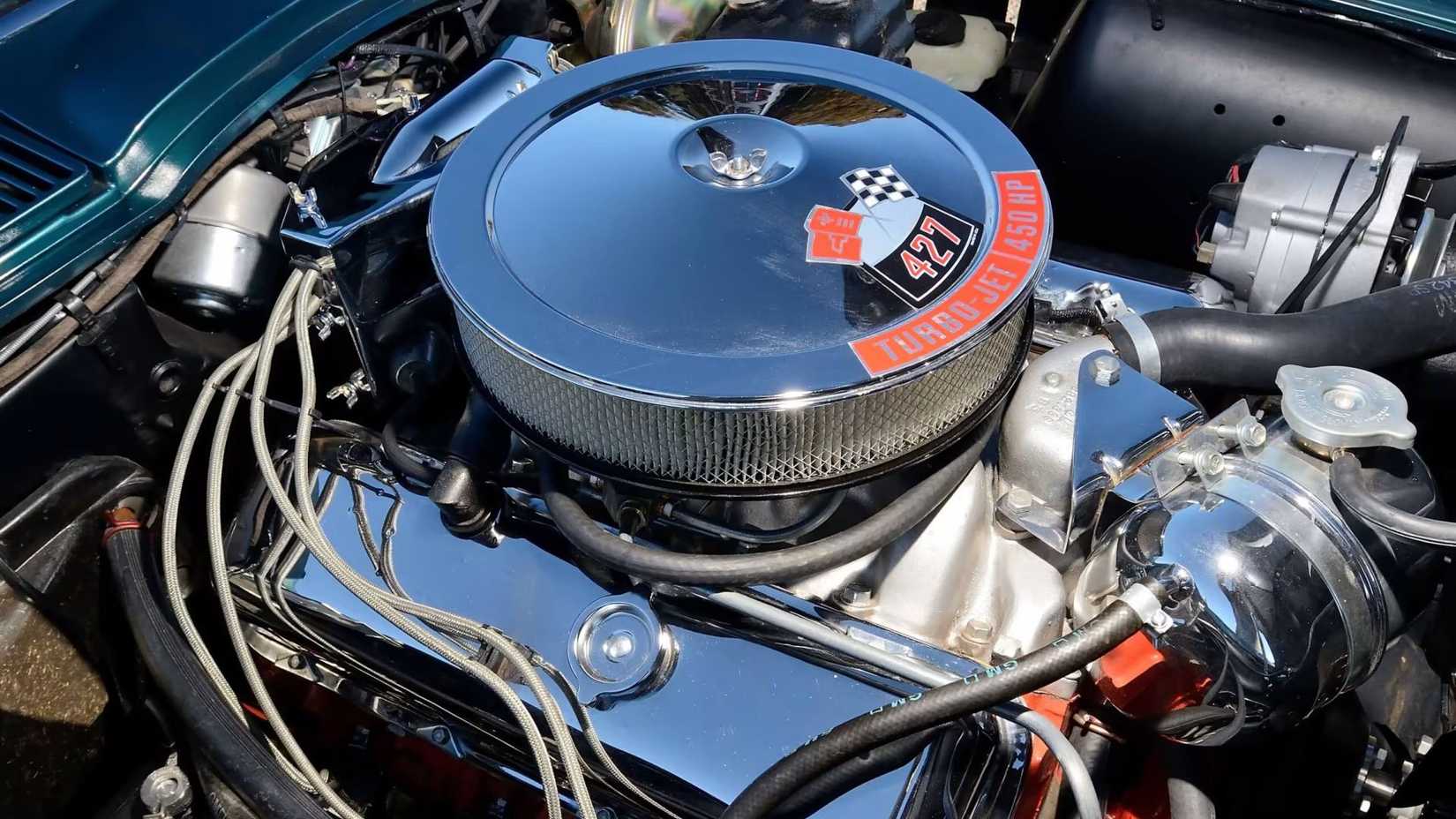
Despite their undeniable appeal, big-block V8 engines began to fade from production in the late 20th century, with the last major big-block engine, the Chevy 8.1-liter Vortec V8, being produced until 2007.
This engine found its home in larger vehicles like the Chevrolet Yukon, Avalanche, and Suburban. The decline of big-block engines was largely due to the growing emphasis on fuel efficiency and environmental concerns.
Big-blocks are notorious for their poor fuel economy, which made them less practical in an era where efficiency and sustainability became a priority for both consumers and manufacturers.
Today, with the focus shifting towards green energy and fuel-efficient vehicles, manufacturers have turned to alternative solutions for high-performance engines. Instead of big-blocks, many modern muscle cars rely on forced induction, such as superchargers and turbochargers, to achieve powerful performance without the drawbacks of large engines.
A prime example is the new Corvette ZR1, which features a 5.5-liter twin-turbo V8 engine capable of producing a jaw-dropping 1,064 horsepower straight from the factory.
This represents a new era of performance that blends traditional muscle car power with modern technology and efficiency.
However, the allure of big-block engines remains strong among car enthusiasts. The idea of seeing a new big-block V8 muscle car released by manufacturers like Ford or Chevy in 2025 would undoubtedly excite many fans of the genre.
The nostalgia and raw power associated with big-block engines evoke memories of the golden age of muscle cars, making them an enduring symbol of American automotive culture.
While it’s unlikely that big-block V8 engines will make a full comeback in the current automotive, their legacy lives on.
The powerful performance, distinctive sound, and exhilarating driving experience they provided continue to influence the design and engineering of modern muscle cars. For those who appreciate the raw power and spirit of the muscle car era, the memory of big-block engines will always hold a special place in their hearts.
Whether through classic models or modern reinterpretations, the impact of big-block V8 engines is undeniable and will continue to inspire future generations of car enthusiasts.
1) The Charm of Physical Switches in Modern Cars
In the age of advanced technology, many aspects of car design have changed dramatically, especially with the rise of electronic controls.
While modern vehicles offer impressive features like large infotainment screens that manage everything from climate control to seat settings, there’s something special about the traditional physical switches that many drivers miss.
These tactile controls bring a sense of connection and satisfaction that touchscreen interfaces often lack.
Physical switches have long been a staple in vehicle design. In older cars, the experience of flicking a switch or pressing a button felt significant, almost like starting up a piece of heavy machinery.
The satisfying click of a button or the reassuring resistance of a toggle switch provided instant feedback to the driver, allowing them to know that the function was activated.
Whether it was turning on the headlights, adjusting the wipers, or controlling the air conditioning, these switches created an engaging interaction with the vehicle.
However, as technology advanced, car manufacturers began to favor sleek, high-tech interiors filled with large screens and minimal physical controls.
This shift was partly driven by consumer demand for modern aesthetics and the desire to incorporate more features into a single interface. Infotainment systems now allow drivers to access a myriad of functions with just a few taps, including navigation, music, and vehicle settings.
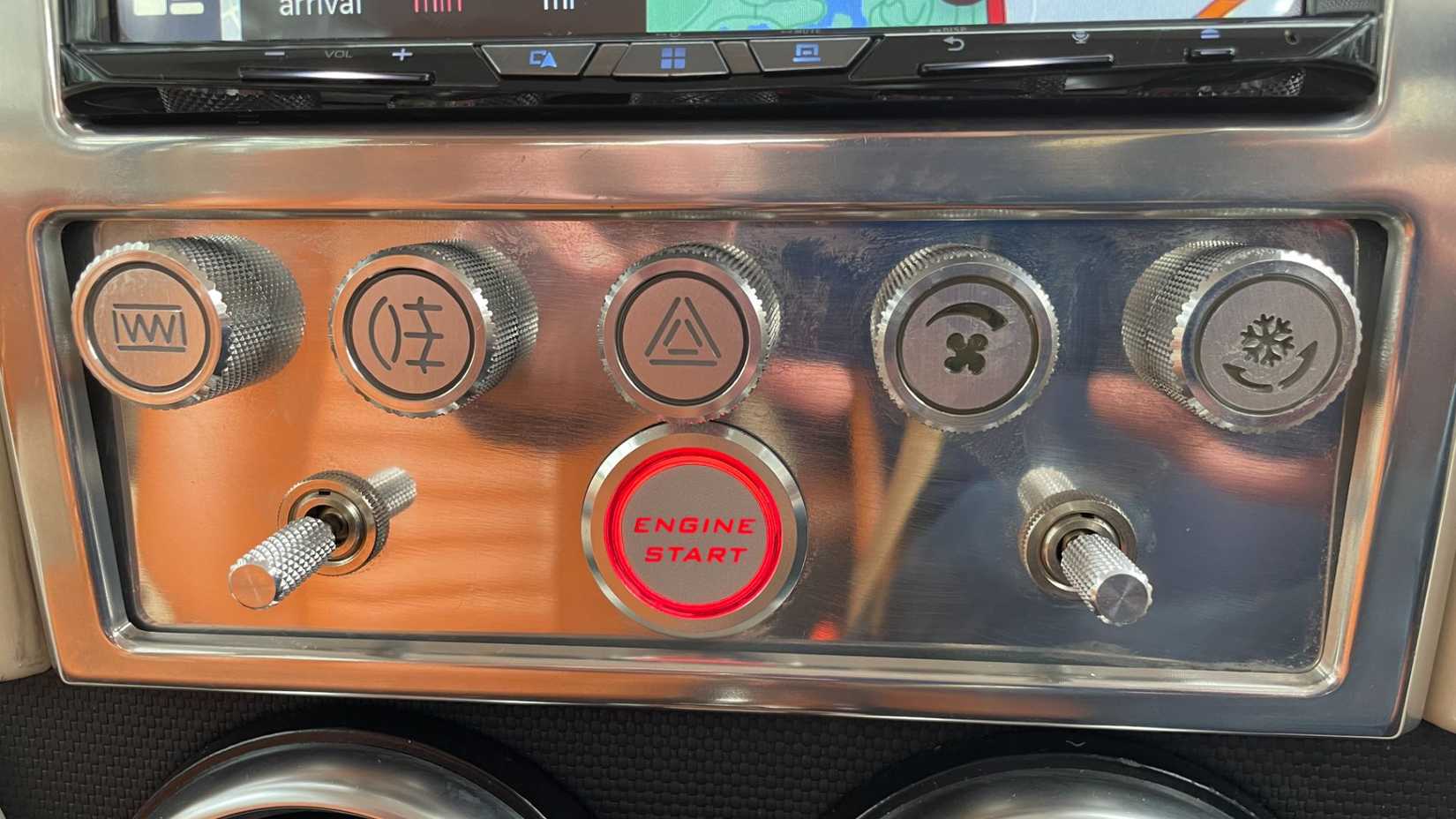
While these systems offer convenience, they can also be frustrating. Finding the right menu can feel cumbersome, and drivers often find themselves distracted while trying to navigate through sub-menus instead of focusing on the road ahead.
In contrast, physical switches provide a direct and intuitive experience. Imagine driving on a winding road while effortlessly adjusting the temperature with a simple turn of a knob or switching on the fog lights with a quick flick of a lever.
These actions require minimal distraction, allowing drivers to keep their eyes on the road and maintain focus on their surroundings. In an age where safety is a top priority, this ease of use is more important than ever.
Moreover, many car enthusiasts appreciate the nostalgic feel of physical controls. For those who grew up with classic cars, the experience of interacting with tactile switches evokes fond memories.
There’s a certain charm in the way older vehicles were designed, where every switch and button served a clear purpose and was easily accessible. The shift towards electronic controls can sometimes make modern cars feel less engaging and more sterile.
Despite the growing popularity of touchscreens, there is a glimmer of hope for the return of physical switches. Some car manufacturers have started to recognize the benefits of blending modern technology with classic design elements.
For example, certain luxury models now feature a combination of both touch-sensitive surfaces and traditional switches, allowing drivers to choose the method that feels most comfortable for them.
This hybrid approach can create a more satisfying driving experience while still embracing the advancements of modern technology.
In, while the electronic revolution has transformed the way we interact with our vehicles, the charm of physical switches remains undeniable. They provide a sense of satisfaction and connection that digital controls often fail to replicate.
As car designers continue to innovate, there is potential for a resurgence of physical controls that can coexist with modern technology. This balance could help preserve the driving experience we cherish while still offering the conveniences of today’s vehicles.
For many drivers, the dream of flicking switches and pressing buttons may not be entirely lost, and the future of automotive design may yet bring back the tactile joy that physical controls provide.
